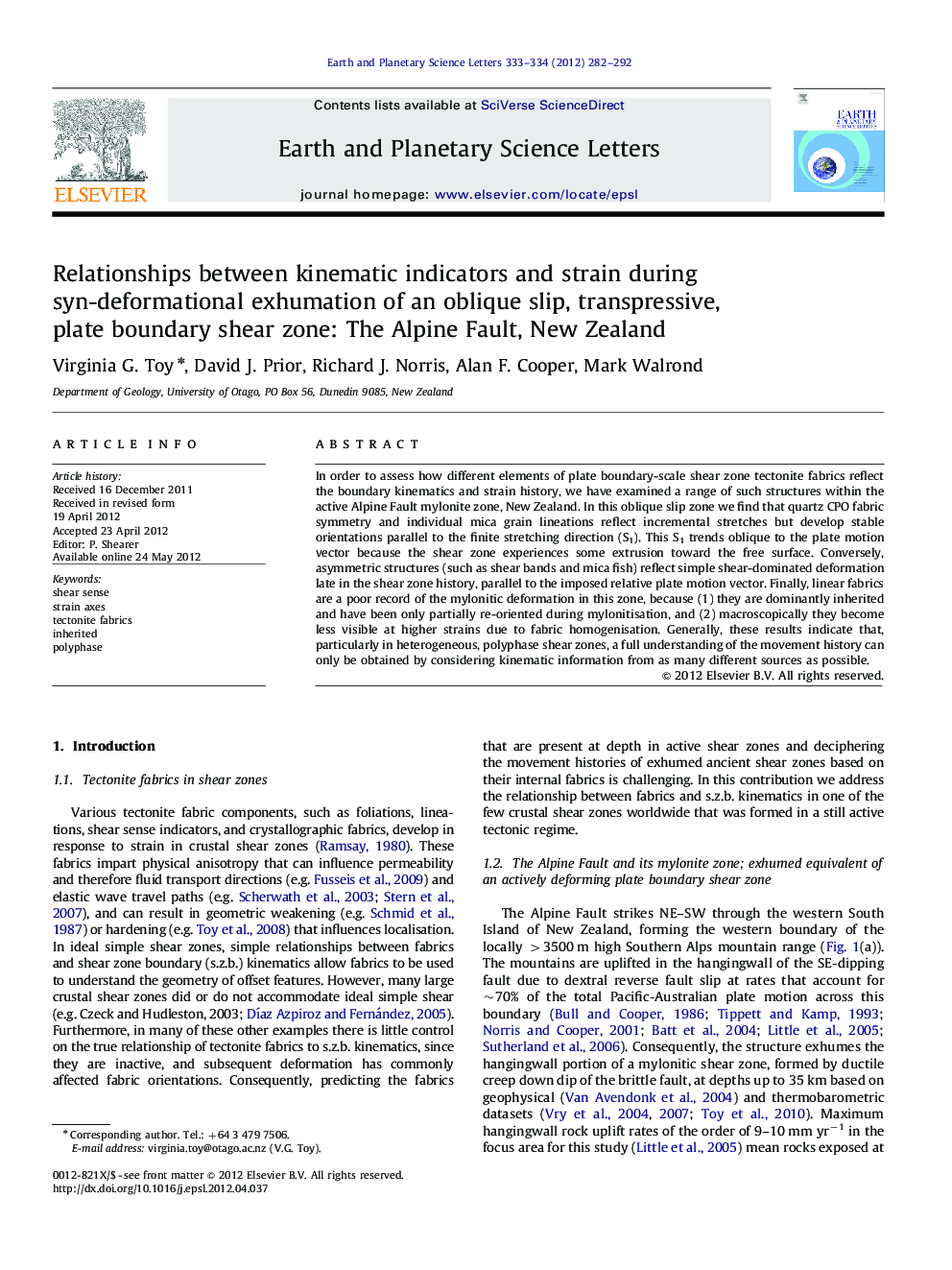| Article ID | Journal | Published Year | Pages | File Type |
|---|---|---|---|---|
| 6430652 | Earth and Planetary Science Letters | 2012 | 11 Pages |
In order to assess how different elements of plate boundary-scale shear zone tectonite fabrics reflect the boundary kinematics and strain history, we have examined a range of such structures within the active Alpine Fault mylonite zone, New Zealand. In this oblique slip zone we find that quartz CPO fabric symmetry and individual mica grain lineations reflect incremental stretches but develop stable orientations parallel to the finite stretching direction (S1). This S1 trends oblique to the plate motion vector because the shear zone experiences some extrusion toward the free surface. Conversely, asymmetric structures (such as shear bands and mica fish) reflect simple shear-dominated deformation late in the shear zone history, parallel to the imposed relative plate motion vector. Finally, linear fabrics are a poor record of the mylonitic deformation in this zone, because (1) they are dominantly inherited and have been only partially re-oriented during mylonitisation, and (2) macroscopically they become less visible at higher strains due to fabric homogenisation. Generally, these results indicate that, particularly in heterogeneous, polyphase shear zones, a full understanding of the movement history can only be obtained by considering kinematic information from as many different sources as possible.
⺠Fabrics record various parts of syn-exhumational strain in Alpine Fault mylonites. ⺠Microfabrics formed by incremental stretches have stable orientations parallel S1. ⺠Asymmetric fabrics reflect late stage mylonitisation when simple shear dominated. ⺠Many lineations are inherited and do not reflect the present-day kinematic regime. ⺠Thus, all fabric elements need to be examined to interpret shear zone movement histories.
